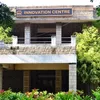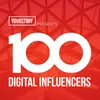Fusion innovation: How 30 innovators crossed boundaries to create business value and social impact
This must-read book shows how cross-disciplinary ‘fusioneers’ innovate through a process of collect, connect, and create.
Launched in 2012, YourStory's Book Review section features over 280 titles on creativity, innovation, entrepreneurship, and digital transformation. See also our related columns The Turning Point, Techie Tuesdays, and Storybites.
Innovation through a combination of perspectives and cultures can spawn new types of value creation. Methods, theories, and stories of fusion innovation in action are presented in the must-read book Innovation Through Fusion: Combining Innovative Ideas to Create New Solutions by CJ Meadows.
This hefty 500-page book profiles 30 world-class innovators with multiple backgrounds. Each inspiring story is based on in-depth interviews with innovators as well as their colleagues and family members, with links to short videos.
Nuclear fusion produces massive energy from combining two nuclei – similarly, cross-disciplinary fusion can lead to new types of offerings, organisations and business models. The book combines academic research with inspirational storytelling to illustrate these processes.
CJ Meadows is Director of i2i, the Innovation and Insights Center of SP Jain School of Global Management in Singapore. She has a doctorate in business administration and IT from Harvard Business School, and has over 20 years of international experience as an entrepreneur and coach. She also founded The Tiger Center, a social enterprise in India.
Here are my key takeaways from the 39 chapters in this compelling book, summarised as well in the table below. See also my reviews of the related books The Seven Principles of Complete Co-creation, Cross-Industry Innovation, The Art of Noticing, Non-Obvious Trends, The Serendipity Mindset, and The Creative Thinking Handbook.

I. Foundations
The author defines a ‘fusioneer’ as one who innovates across boundaries between industry, field, country, or social class. They are interdisciplinary creators, lateral innovators, borderless free-thinkers, and boundary-crossing integrators.
Fusioneers have T-shaped personalities, and are sometimes regarded as oddballs. They cross-fertilise ideas, synthesise models, and create mash-ups at intersections of different fields. Through the centuries, opportunities for creativity have mushroomed by mixing and marrying ideas from different industries and countries, and we are now in a new renaissance, the author explains.
The four steps in a fusioneer’s journey are open, collect, sense and fuse, but there is back-and-forth movement between these steps as well.
A fusioneer is outwardly open. They are highly aware, great listeners, and observant noticers. They are also inwardly open, and are deeply aware of their own interests and talents while excelling in self-management, work-life integration and spiritual reflection as well.
A fusioneer develops an ongoing collection of ideas, people, experiences, skills, certifications and degrees for the “workshop of the mind,” the author evocatively explains. To sense changes in the world, the fusioneer cultivates a unique lens without prejudice, and is able to see, map and analyse things others miss.
A fusioneer does not just make choices between alternatives but combines or fuses approaches. They deconstruct and re-assemble, and the combination leads to new value creation.
A fusioneer embodies the different types of empathy: emotional, cognitive, and compassionate. They sense and resonate with others’ emotions, can understand their point of view, and move to action.
“Great value lies waiting in undeveloped inter-spaces and new applications,” the author observes.
Of the 30 fusion innovators profiled, most of them spent six months or more in multiple nations, the author observes. Crossing international boundaries helps them cross other boundaries between cultures and disciplines as well, the author explains.
They have mental diversity irrespective of advanced degrees, and don’t just do jobs but create jobs. They are self-directed and driven by inner motivation rather than external incentives.
Many of these facets were discovered by the author using a tool called Multicultural Personality Assessment. An outstanding table in the book (Table 3.1) summarises the innovators’ international experience, organisations, achievements, and impact.
II. 30 fusioneer stories
The bulk of the book features illustrated stories of 30 fusioneers, with personal and professional journeys. Unfortunately, some of the figures are generic photo-stock images and there is a disconnect between the captions, image, and chapter text. Perhaps leaving some images without captions may have helped instead.
References for each chapter are drawn from books, TED talks, HBR, and academic journals like Journal of Experimental Psychology and Journal of Personality and Social Psychology. It would have been great to have an integrated reference section at the end of the book, pulling all these resources together.
Some of the referenced books have been reviewed by YourStory as well, such as Dual Transformation, Gamechangers, and Innovator’s DNA. See also our reviews of Creative Edge and Introvert Entrepreneur.
Samuel Gan is a scientist, product developer and educator, who converts some of his knowledge into mobile apps for mass audiences (e.g. DNAapp, VibraTilt). The creative problem solver also co-founded an academic journal on mobile apps, and likes to link fieldwork with labs.
Jawahar Kanjilal pioneered a number of mobile features during his Nokia days in India, such as the ringtone deal for Saare Jahan Se Accha, mobile insurance, Visual Radio, and Life Tools for rural users.
Matthew Rooda, Founder of the aptly-named SwineTech (‘Fitbit on a pig’), developed and combined expertise in agriculture, medicine and engineering to solve the problems of pig breeders.
Robest Young has won the title Malaysia’s National Inventor of the Year, with a string of products to solve daily problems. The tinkerer has come up with mosquito glue (to attract and kill them, rather than repel them), micro-fertilisers, combined sink-cistern, smartphone accessories for the blind, and rubber stamp technology inspired by the printing industry.

Sister Cyril Mooney was Principal of the Loreto Sealdah School in Kolkata. She extended the private school’s facilities for underprivileged and disabled children, combining educational and social causes with a humanitarian mission.
Jack Sim is a serial and social entrepreneur in areas like sanitation, founding the Restroom Association in Singapore, the World Toilet Summit, and BoP Hub accelerator. He was so talkative as a child that he would often be made to stand outside the class (“outstanding student,” he jokes).
Margaret Connors extended the practice of urban farming as a livelihood generator (“green collar labour”) for poor communities and food security for neighbourhoods in the US. She founded City Growers and the Urban Farming Institute.
Raffi Rembrand is CTO of BioHug Technologies and an expert in autism diagnosis, blending audiology and touch technology. His inner journey is shaped by his own experience as a parent of an autistic child.
Indian expat Krish Krishnan founded strategy consultancy Jeiva International, and is an advisor to healthcare firm ImmunoHeal. He developed technology for over-clothing breast cancer detection.
Ravi Kumar Banda founded XCyton diagnostics to combine bacterial and viral testing in an affordable manner for broader social benefit. Scientist Adeline Sim specialises in computational structural biology at the Bioinformatics Institute in Singapore.
Drawing on his international and multi-disciplinary background, Livio Valenti founded Vaxess Technologies, which created vaccines that were embedded in silk protein fibres. Med-tech developer Chin Sau Yin is President of Biotech Connection Singapore, and fuses polymer science with healthcare technologies.
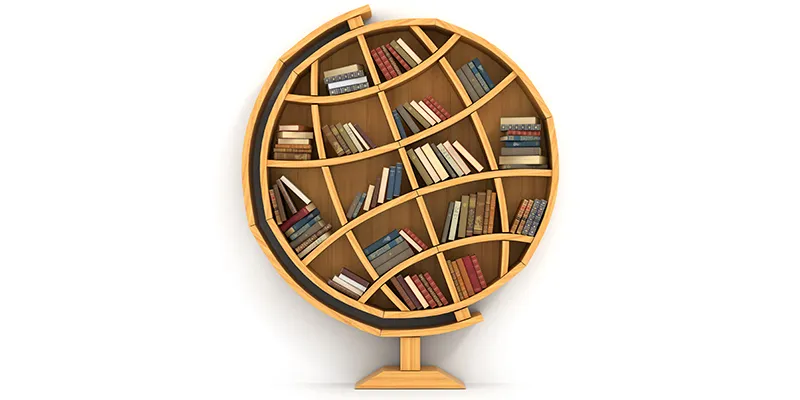
Melissa Kwee is a social entrepreneur, blending business with social causes and philanthropy. She has worked on improving the lives of imprisoned mothers and their children. This polymath also served as President of UN Women Singapore, and co-founded One Degree Asia and the Halogen Foundation.
Grace Sai combined co-working spaces, mentorship networks, and events for business and social causes. She founded Books for Hope as a library network in rural Indonesia, and launched Impact Hub in Singapore.
Rick Smolan nurtured his childhood passion for photography and worked at Time, National Geographic and Life magazines. He combined this skill with an entrepreneurial flair and launched bestseller books like A Day in the Life series (Australia, Medicine, One Digital Day, Big Data). He excelled in sensing and visualisation emotion – and finding corporate sponsors for his projects by sensing their needs and aspirations.
Ted Saad, of Palestinian heritage, made a mark in the US by combining multiple media businesses; the Emmy Award winner also branched out into wellness products. Chen Yi spent years doing hard labour during the Culture Revolution in China, but emigrated to the US and became a successful composer blending Chinese and Western classical music.
George Kolovos was an early e-commerce pioneer (MenuLog), and expanded into sports and the Quad Café business as well. Chef Ryan Clift combines multiple cuisines and sciences into his series of restaurants; he began as a dishwasher, and insists that all staff be respected.
Jack Cowin spotted a long line outside a restaurant, which sparked him to launch a series of fast-food restaurants in Australia. He also launched a tourism business for tourists to climb atop Sydney Harbour Bridge.
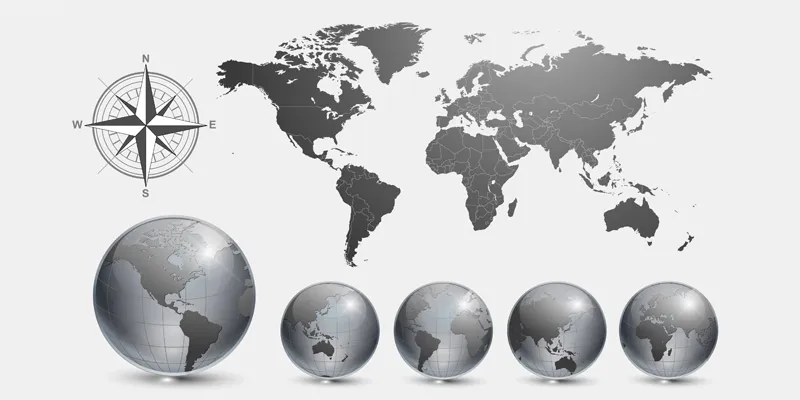
Arun Abey is of Indian and Sri Lankan origin, and his experience with hardship as an immigrant in Australia sensitised him to the empowerment of financial services. He fused macro- and micro-economic theory with innovative business models in his company, Ipac Securities.
Karen Stephenson, a pioneer in organisational social network analysis and corporate anthropology, combined perspectives from quantum physics, ethnology, mathematical modelling, and management consulting. The founder of Netform Resources, she got an epiphany while watching people movement patterns from an upstairs office on the mezzanine floor.
Mihnea Moldoveanu founded Redline in the early Internet days, and made a mark in the ADSL modem space. He later founded the Centre for Integrative Thinking at the University of Toronto.
Parag Khanna is a founder (Factotum), strategy advisor (Hybrid Reality), author (Connectography) and policy specialist (National University of Singapore). He blends perspectives from technology, geography, and government.
Integrative thinker Edy Greenblatt fuses body and mind by combining dance, ethnology and executive coaching. She helps others focus on the integrated self and integrated team. Sean Leas combined his knowledge of intercultural contexts and corporate environments to become an expert in running international joint ventures.
Sports scientist Kenneth Graham leveraged statistical insights to perfect his dives, winning the best Olympic scores. He coaches across sports disciplines, viewing athletic performances from different perspectives. He also invented a tumbling machine for coaches to better analyse divers and gymnasts.
Growing up as a Turkish immigrant in Austria, Asil Toksal founded Energy Biodiesel, but also expanded into digital media and spirituality. He nurtured a love for experimenting,
Tal ben Shahar is Founder of Potentialife, a leadership development programme. His work combines education, wellbeing, and personal happiness, for children as well as professionals.
III. Lessons from the fusioneer
The stories above are inspiring as well as informative. The author shows how they offer lessons such as the importance of asking what as well as what if questions, why and why not. Seemingly random connections can actually be useful in the long run.
The fusioneer is hyper-aware with a strong sense of intuition, genuine interest, and constant curiosity. They are voracious and insatiable readers and absorb ideas like a sponge, thus learning broadly and deeply. Greater exposure leads to more dots to connect and patterns to emerge.
Some of them can spot deeper patterns underlying arts and science, and can filter diverse information and take decisions to act upon them. Some innovators also toss out ideas on social media for feedback (“idea grenades”).
They “tune in” to environments and can see what others miss – and also see what is missing but should be there. They can see what’s next, what’s around the corner, and what’s around the world.
They are non-judgmental and don’t close off ideas too early, before their potential has been fully explored. As idea collectors, they do not discard potentially useful ideas. Once they catch a dream, they pass it on, the author evocatively describes.

They can envision and extrapolate from the present. Fusioneers have psychological flexibility, and are not constrained by boxes of the existing convention – they either don’t see them, or are aware of them but know how to breach them.
They collect and connect dots, and appreciate the fuzziness and grey areas in cross-disciplinary thinking and collaboration. The fusioneer can communicate using analogies and metaphors to figuratively introduce emerging concepts.
They have an innate ability to learn, and some of them were gifted as children while others were even seen as ‘problem children’ for some time, the author observes. Rather than having failed in school, it was school that failed some of them, she adds.
They withstood criticism from naysayers and detractors in their innovation journeys. They are self-driven and strong-willed. Some are good intellectual “sparring partners” and even provocateurs; they enjoy “idea jam” sessions.
Some of them took on jobs as waiters in their early years, which offers valuable lessons in sensing, communication, and dealing with difficult situations.
The innovator’s passion for solving problems and understanding customers helps see what others don’t. They also probe for a new or better way to solve problems. Many of them have additional roles as teachers or mentors, which are good ways to learn as well. Working with youth can keep the mind creative and spirit young.
The fusioneer combines desire with drive in the bias to action, and helps others by solving their problems. They don’t just find problems but care enough to solve them.

They connect ideas as well as people in their journey, and are articulate and authentic in communication. They clarify ideas by drawing, visualisation and extensive note-taking. They have perseverance and take risks, but are open to learning from failure, which they regard as “lessons to be repurposed.”
They have a creative sense of play and can be almost child-like in this manner. Some of them move quickly from one idea to another, handing them over to others. Others work on multiple projects at the same time. Some get bored with details and move on.
They surround themselves with diverse creative communities for ideation and co-creation. They are dreamers but also help others dream. They can sense other people’s skills and energy flows in groups, and are open to partnering.
These curated communities help via the “collision of ideas, conversations and connections (planned serendipity),” the author shows.
Fusioneers are catalysts and mobilisers, and “want to live a useful life.” They enlist, inspire and empower teams for their causes. They bring their whole self to work, and come across more as conductors than generals. They are a ball of “contagious energy” and nurture creativity among the people they work with.
“Perhaps the most important openness is to build a dream with other people,” the author explains.
The fusioneer blends different influences while also respecting the original sources. They are skilled in pattern recognition and trend spotting, and are good organisers and fixers. Some of them have had experiences as a minority, which makes them sensitive to the issues of other minorities.
At the same time, they also reserve space and time for personal reflection through meditation or swimming and taking long walks (‘thinkwalking’). Such techniques even during ‘boring’ activities help incubate, germinate, ferment and simmer ideas.
Openness can also create discomfort, dissonance, tension, confusion, and information overload. Too much empathy can lead to burnout and loss of productivity, the author cautions. It is therefore important to know what are the drivers and boundaries of one’s inner happiness.
The road ahead
It is not just organisational diversity, but social and mental diversity that are important for tomorrow’s leaders, the author emphasises. Creative capital is as useful as social capital. This also calls for being comfortable in difficult conversations during the synthesis of intelligence across diverse communities and cultures.
“Fusion is different from living two lives or having diverse interests,” the author clarifies. For example, TS Eliot was a poet and banker, and Franz Kafka was an insurance clerk and writer – but they kept these interests separate.
Fusion calls for generation, not just connecting. Creativity draws from four roles: explorer, artist, judge and warrior, according to Roger von Oech.
“Become uniquely and extremely yourself,” the author signs off. She asks: “Instead of fire, why not create fusion?”
In sum, the insights and inspiration in this book will be valuable for aspiring entrepreneurs and intrapreneurs, as well as researchers and teachers of innovation. It clearly shows the value and impact of the ‘access, assemble and apply’ approach to innovation.
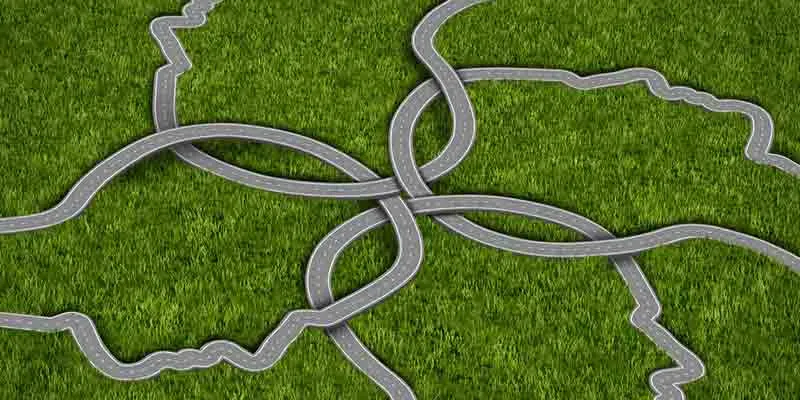
The book is packed with inspiring quotes, and it would be fitting to end this review with the sample below.
- Creativity is just connecting things. – Steve Jobs
- Innovation magic happens at intersections. – Scott Anthony
- Innovation comes from intimate knowledge. – Jonah Gavrieli
- Empathy is the engine of innovation. – Gary Hamel
- Knowledge speaks. Wisdom listens. – Jimi Hendrix
- Truly innovative solutions to problems come primarily from the cross-pollination of disciplines. - Neil deGrasse Tyson
- I learn as much from painters about how to write as I do from writers. – Ernest Hemingway
- You don’t choose your passions, your passions choose you. – Jeff Bezos
- The uninspired can’t help you figure out the unimagined. – Eddie Yoon
- Chance favours the prepared mind. – Louis Pasteur
- When you change the way you look at things, the things you look at change. – Max Planck
- A map does not just chart, it unlocks and formulates meaning; it forms bridges between here and there, between disparate ideas that we did not know were previously connected. ― Reif Larsen
YourStory has also published the pocketbook ‘Proverbs and Quotes for Entrepreneurs: A World of Inspiration for Startups’ as a creative and motivational guide for innovators (downloadable as apps here: Apple, Android).
Edited by Saheli Sen Gupta



